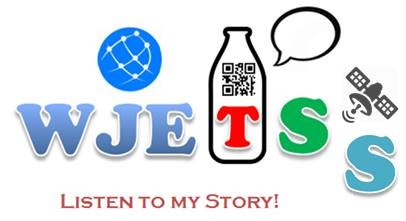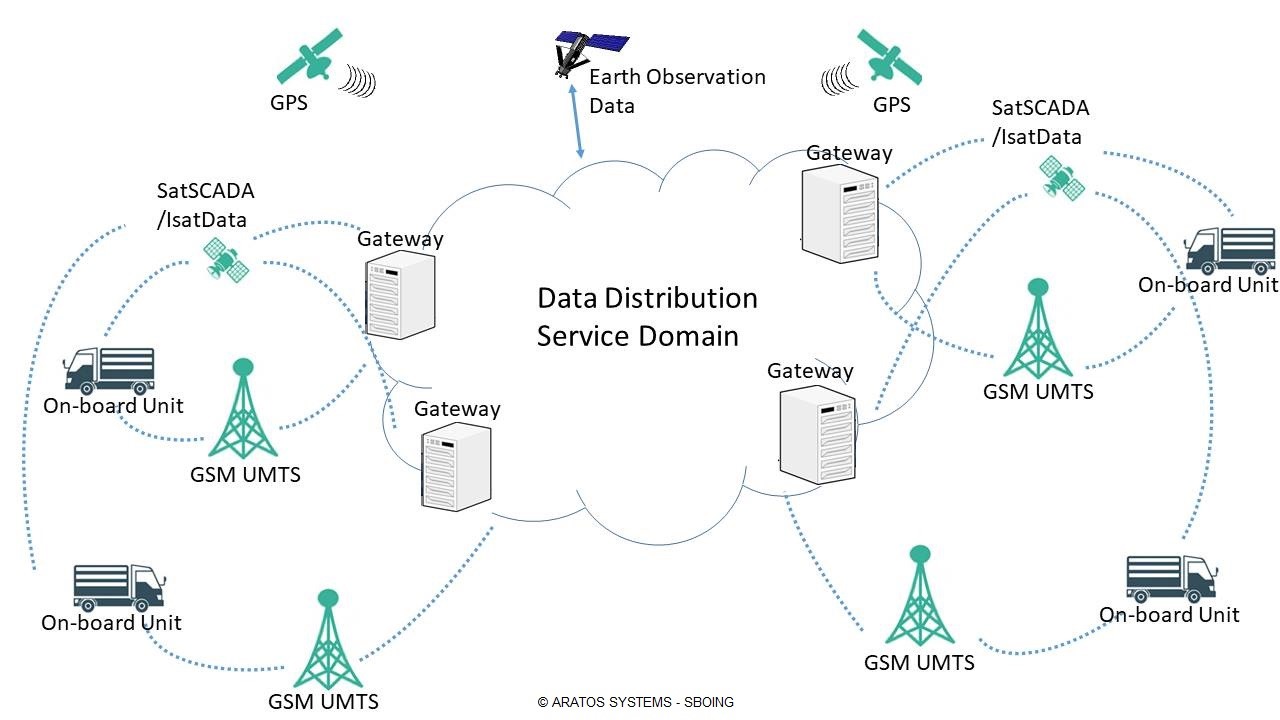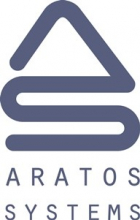
Objectives of the service
Quality management presents a major challenge for Transport, aiming not only to monitor the shipment’s condition for traceability purposes, but also to minimize the total value of damaged or destroyed goods during transport. WJETSS presents a new paradigm in addressing such challenges by enabling transportable, consumable and perishable “Things” or dangerous cargo (IoT) to “tell” their whole-journey experience (WJE) from production to consumption, through the monitoring and collection of sensor data (called “SenSourcing”) from all freight legs. Each freight leg is monitored by sensors installed in the vehicle and the transport conditions are recorded and quality indicators are computed and associated with every single transported product. Multi-GNSS with inertial navigation provides geo-positioning services. M2M connectivity with global coverage is provided by a hybrid telecom infrastructure of superimposed terrestrial cellular and satellite-based networks. WJETSS is focusing to both the transportation of cargoes of dangerous as well as sensitive / perishable goods.
Users and their needs
Targeted User Communities:
In the food distribution chain: Producers, Logistics service providers, Retailers.
In the dangerous cargoes transportation: Consignors, Consignees, Logistics service providers, Emergency responders.
Users involved in the Project:
KRI-KRI S.A. MILK INDUSTRY, MAKIOS LOGISTICS S.A., GONDRAND TRAFFIC BV.
Users’ Needs:
In the food distribution chain, there is a gap regarding the “quality verifiability” as following:
(i) producers cannot verify the transportation quality of their products all the way up to the consumer (end-to-end) since the monitoring and the fleet management is carried out by the LSPs themselves rather than by an independent third-party,
(ii) consumers cannot verify the quality of the products to be consumed before or after having bought them, and
(iii) LSPs cannot benefit from evidence for the quality of their services and sell this capability as a competitive advantage.
WJETSS allows producers, consumers, LSPs and retailers to verify the quality of any product from production to consumption.
The transportation of dangerous cargoes involves several parties as LSPs, small transport companies, multi-modal transport operators, port and inter-modal terminals, several organizations (e.g. chemicals, hospitals), and emergency responders. With WJETSS, all consignors and consignees can verify the quality of any cargo from its origin to its final destination.
Countries of targeted users: Greece, The Netherlands, rest of EU members, worldwide progressively.
Service/ system concept
The WJETSS monitoring services for the food distribution chain will be provided on a per product basis and throughout the product’s lifetime. The real-time monitoring of the transportation conditions will be based on sensor-equipped systems installed inside carriers’ vehicles and warehouses, and the service will support alerts for critical incidents that will enable immediate response by the driver or the carrier. With the use of QR/NFC technologies the customers or quality controllers will be able to find out the quality and the entire transportation history of product.
The prospect to quantitatively assess the quality of transportations by means of a third party will progressively motivate LSPs and warehouse companies to improve their services and eventually invest in a higher quality and reliability for the transportations of perishable products. Thus, the percentage of damaged and spoiled products reaching the retail stores can be effectively reduced.
For the transportations of dangerous cargoes, we foresee a similar trend due to the new chances of providing evidence of compliance to safety regulations, relying on third party services for dispute resolution and eventually achieving lower insurance costs and improved reputation of environmental-friendly services.
System architecture and main system blocks:

Space Added Value
The added value of the space assets to be used in WJETSS is the location awareness and situation awareness for both the cargo’s/product’s whole-journey experience indicators and the real time alerts to be thrown.
The requirements for location awareness involve Multiple Global Navigation Satellites Systems (MultiGNSS) for the determination of an item’s latitude, longitude and altitude, with any given positioning satellite available (GPS, GALILEO, GLONASS, GBAS, etc.), so to include all potential territories, as well as the use of GIS data for identifying the static environment around the item’s position and the spatial relations between the nearby physical objects (e.g. buildings indicating urban trails, coastline indicating island routes etc.).
Through the situation awareness, the WJETSS platform will be able to detect hazardous or inefficient situations (e.g. landslides, traffic jams etc.) based on near real-time information about events and the temporal status of the nearby objects for the monitored item via EO data from EUMETSAT and Copernicus SENTINELS.
WJETSS platform will be based on a cost-efficient M2M connectivity solution over a hybrid communication infrastructure composed of superimposed terrestrial cellular & satellite based networks to offer M2M connectivity with 100% global coverage.

Current Status
The Feasibility Study has been concluded with the Final Review on 21 August 2018. The study was investigating the technical feasibility and commercial viability of the WJETSS solution. We concluded that the WJETSS solution has the potential to become sustainable and create short-to-medium Return on Investment by mitigating several of the identified technical and commercial risks related to the implementation of the targeted services. During the study a prototype of the WJETSS solution was developed. Its technical status and the initial deployments/trials into the operational framework of KRI-KRI & MAKIOS (Greece) along with the initial positive and supportive comments from Gondrand (Netherlands) give us the strength to continue effectively to the next phase. Upon establishment of strong and viable commitments with our identified End-Users we intend to move forward with an IAP Demonstration Project to develop and demonstrate the final product and related services.



